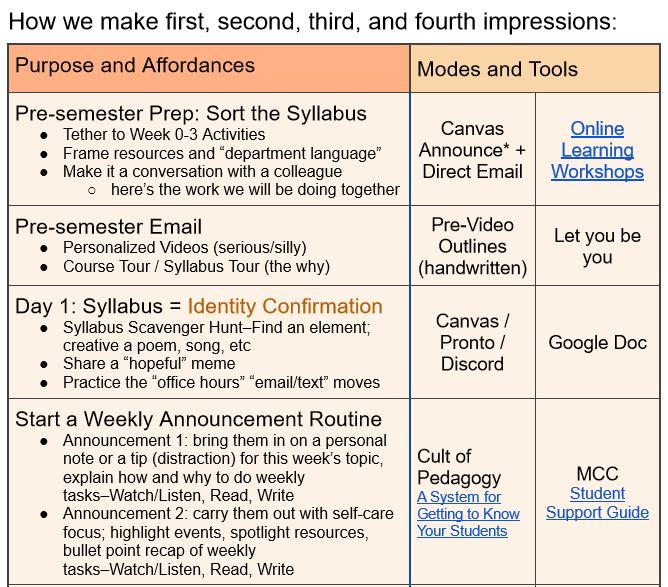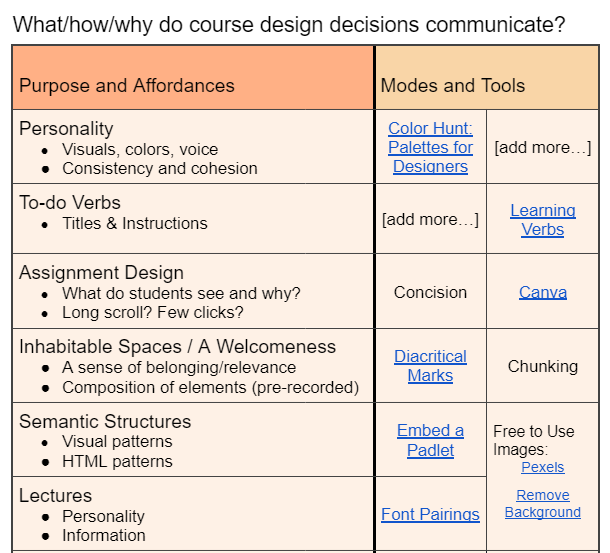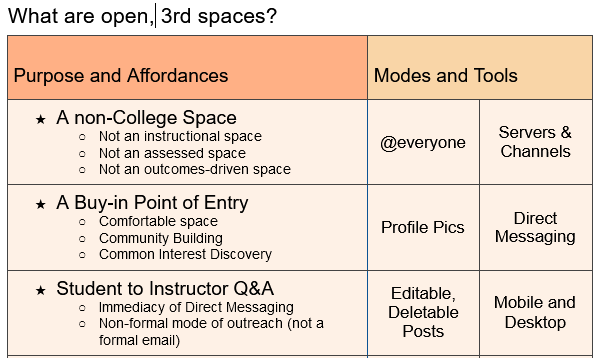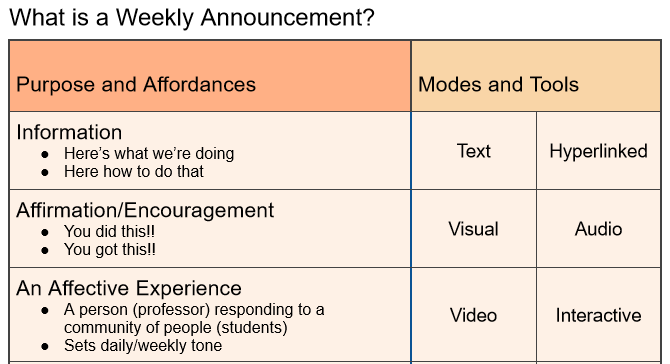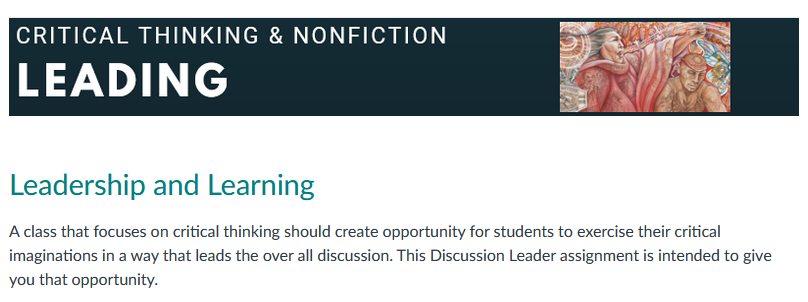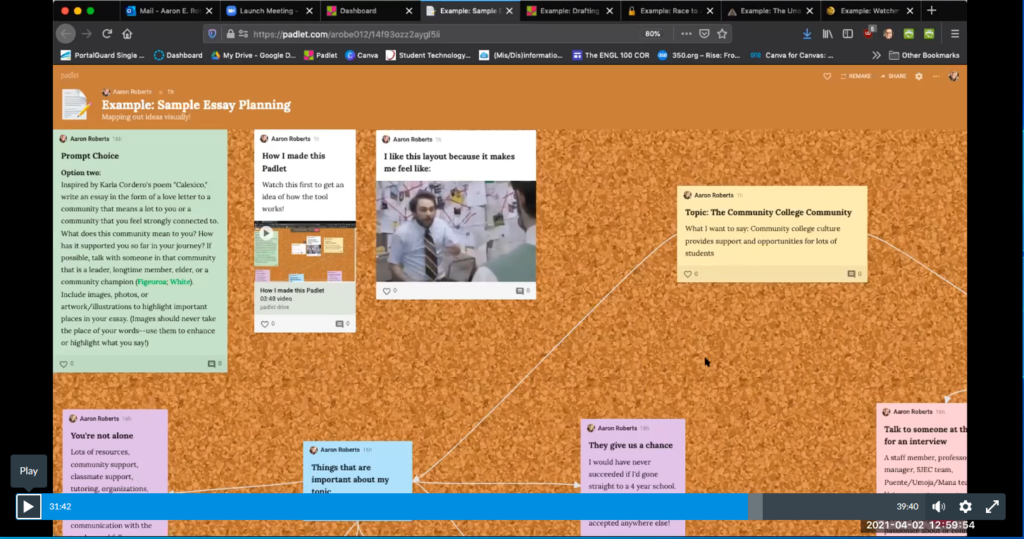In the last community of practice workshop lead by Zulema and Luke, many folks there–Aaron, JahB, Megen, Tyrone, and Jose–shared about teaching reading practices that start with texts and language “from everyday life,” that value linguistic diversity, and that even facilitate a healing process within one’s own literacy history. Cool bell hooks moves. If you missed the convo, catch the recording.
At one point (right around 40:00), Tyrone shares an early semester assignment in which he asks students, “What’s the last thing you read?”Often, he receives the response, “Well, I don’t really read books.” At the ready, Tyrone replies in his awesome, encouraging, teacherly way, “That’s not what I asked you. What is the last anything you read.” In this, I see Tyrone intentionally and intrusively disrupting, demystifing, and destigmatizing the “Englishy” constraints his students are expecting in order to open space for students to reflect on the texts they decide have value.
Listening to Tyrone and our colleagues talk about inclusive, equity-minded reading practices, makes me immediately think about my own classes and the Englishy constraints I intentionally and often unintentionally design there:
- Does my rubric for a fun discussion activity also measure for “right” and “wrong” language”?
- Does my prompt for an activity that is intended for brainstorming and resource sharing also require paragraph structures?
- Do the expectations for replies to discussion posts actually make writing that reply feel intimidating?
Of course, if those constraints are there, they are designs that come from good intentions: I want my asynch students to practice the conventions and processes of effective writing we’re studying. But should every space where writing happens in my class reinforce expectations on language and structure?
Andrea Castellano in a recent Cult of Pedagogy begins her classes first by acknowledging, “we in this class speak many languages and think in many languages.” And she defines “multilingualism” as speaking many languages, dialects, discourses, and gestures, and code-switching as the agency/necessity to pivot within and across those languages. Her post, “Words Matter: Language Affirming Classrooms for Code-Switching Students,” has me thinking a lot about ways I can open space for writing:
“We should want better for our students. The fact is, code-switching is not a sign of linguistic incompetence, but a normal occurrence for a multilingual brain. (Yuhas, 2021). Rather than attempt to micromanage how they use their language, we can guide students to the realization that they can decide for themselves when and how they code-switch.”
Below is a convenient info-graphic of her major points. Here is space for us to affirm or critique those ideas, today (or whenever):
This is a [Discussion] Where Writing Can Happen
And here’s another space for us to collaborate in real-time later this week:
This is a [space] Where Writing Happens
A Letters Community of Practice Workshop, facilitated by WritingwithMachines
Thursday, October 13th, 2:30-3:30pm in the Zooms
More info, coming soon

